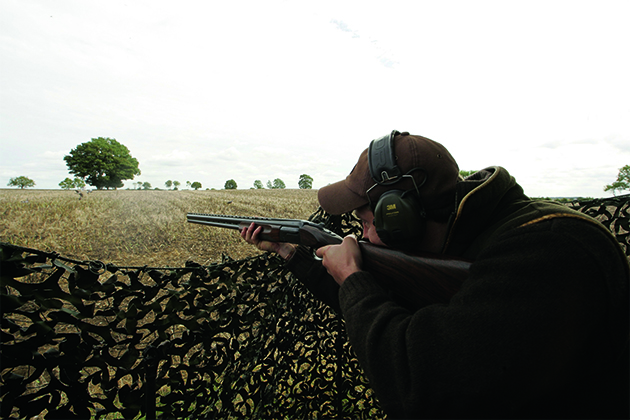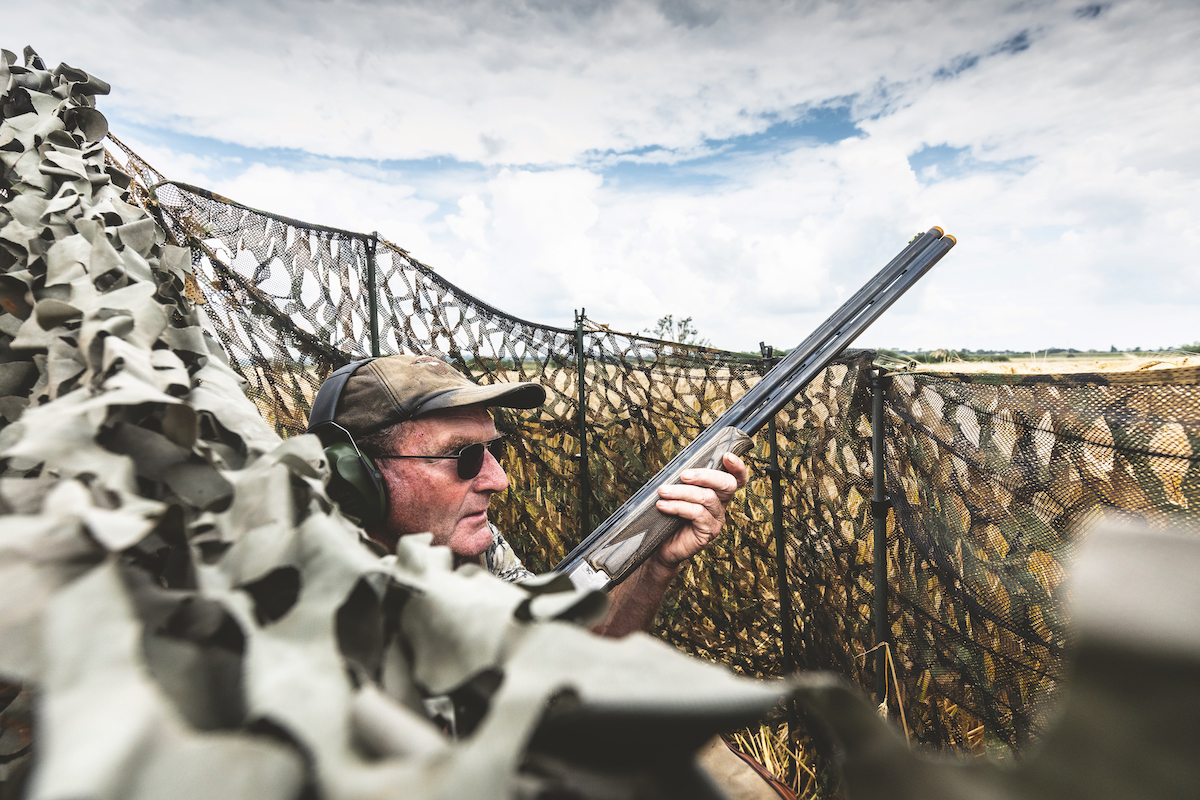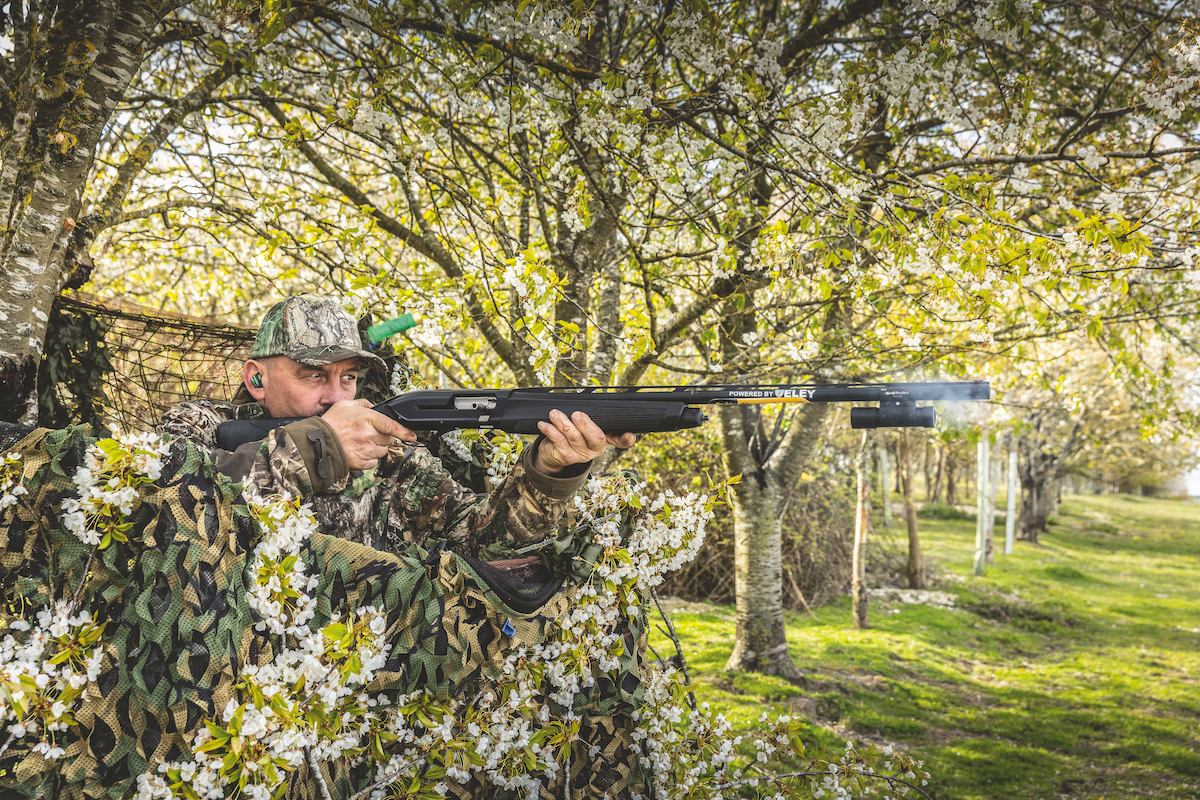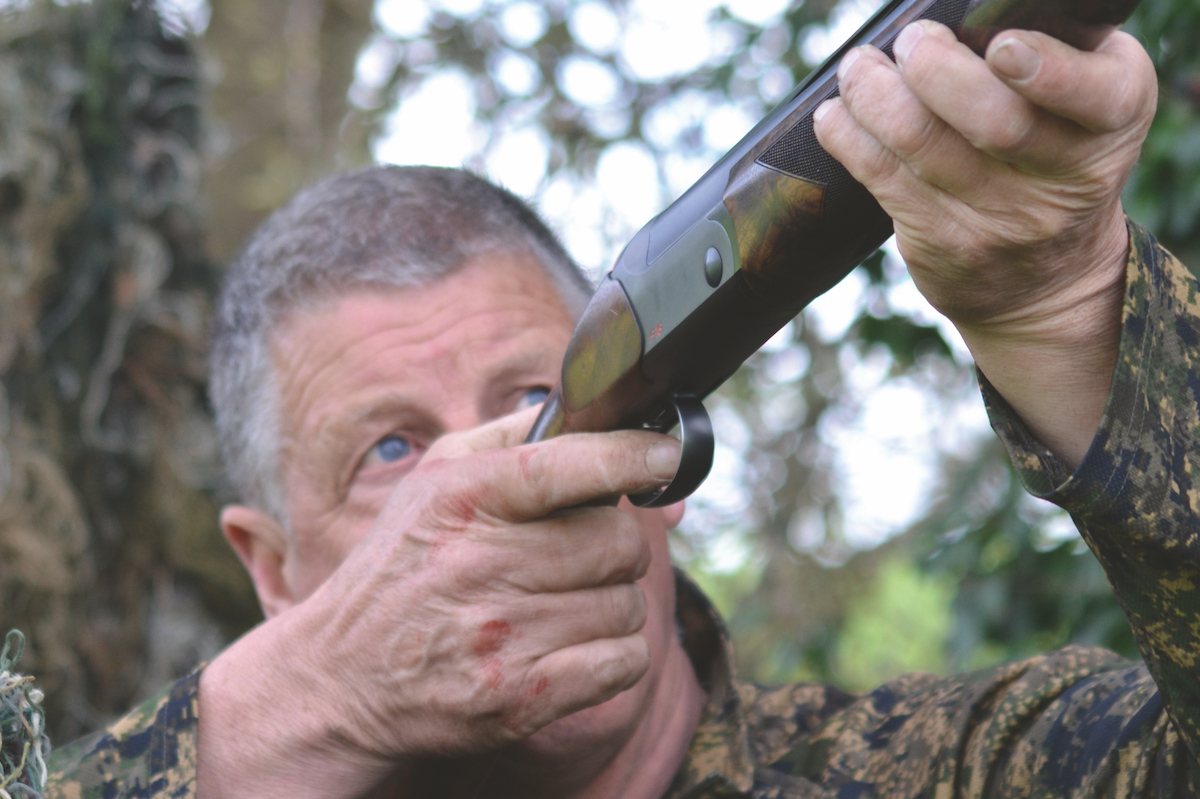Pigeon shooting over beans
As the harvest comes to an end, pigeon shooting over beans can be rewarding and fun if you are well prepared, writes Tom Payne

A pigeon over the decoys
September is the month when the harvest comes to a close. All the farmers’ hard work is now inside and, as usual, the last crops to come off are winter and spring beans. Farmers in my area have not had a happy end to the harvest, not because of grain prices, but due to a change in the weather. Rain led to a sudden stall in the harvest, which has now dragged on. As I write, there are still bits of winter wheat, spring barley and beans still standing.
I love the last stubbles of the harvest — it is a great time to learn a lot about the woodpigeon. I like watching the young birds on what can only be described as training flights, and seeing the numbers gently beginning to flock. As the season turns, you see obvious changes in the birds’ behaviour. It’s a great opportunity to make a dent in the numbers on farms going into the autumn and winter months, and the time when you can spot a large number of young birds on the wing — and this year they have bred well.
The end of the harvest can be a tricky month to shoot good-sized bags, but, on the other hand, with modern farming techniques and quick, efficient cultivating of land, there are far fewer stubbles for pigeon to go at. Even though there are quite a few over-wintered stubbles being left this year, your local pigeon population will always favour a fresh bean stubble or spring barley stubble over volunteer crops on the old stubbles.
Beans are not being grown as much in my area as they have before and this is mainly down to poor market prices. Many farmers who grew beans harvested them early. Not that this matters to the pigeon because there have been other huge food sources available, making beans less appealing. That said, there are always a couple of farms that come up trumps.
Reconnaissance is key
As always with any pigeon shooting outing, reconnaissance is key. I know I stress this every time I write, but it is the make or break in any outing. As the nights draw in, the pigeon feeding hours will change. Rule of thumb is that for every hour you lose in daylight, you should start an hour earlier.
If your local pigeon population finds its chosen field of beans it will really go for it. Many of my friends don’t seem to have much success on beans and the only thing I can put this down to is the time of year the beans are harvested and too many other food sources being available. Or it could be that they are in an area that doesn’t hold the number of birds. For my reconnaissance with beans, I am generally set up by about 9:30am at this time of year so I can maximise any arriving birds.
Pigeon don’t need many beans in their crops to keep them going and might only pay one visit in the day, so you want to be there when they arrive.
An important note with a bean stubble is that rain lays a huge part. When the beans are first harvested, you will see little or no interest and may consider the stubble as a non-runner. Do not be fooled – freshly harvested beans are hard and pigeon find them difficult to digest. A few days of rain softens them up and makes them far more palatable for the woodpigeon. This is when the birds will really start to feed.
Also, don’t ignore a bean stubble when it has been cultivated. It is amazing how many beans stay on the surface and birds will continue to take an interest.
Hides and decoys
You can maximise your outings with the hide you choose to set up over beans. Unlike other stubbles, bean stubbles are dark, almost grey-black. For this reason I usually set up hides in the middle of fields under lines maximising the arriving traffic wind and my shooting angles. With lighter stubbles. such as wheat and barley, pigeon shooting only a bale hide truly works out in the middle. Sometimes woodies can be wary of a hide that has just appeared if they have been feeding on their chosen field for a long time. The pigeon behave differently on a bean stubble. A hide well brashed-up, using conifer branches and surrounding brash seems to work well. This is only something I have noticed in the past few years, but birds seem rarely fazed by a new bush in the middle of a field of bean stubble.
When decoying over a bean stubble it is important to remember that because the stubble is very dark, you should maximise the visibility of your decoys for your arriving birds. Birds tend to feed in small gangs, so show them what they want to see. Using dead bird cradles just raises them above the stubble, making them stand out. Try to use dead birds that are in good condition, but if you are using plastic ones, exaggerate the neck bands with UV white paint. This really does make them stand out.
Remember that there are a lot of young birds on the wing now and magnets and flappers work well together or on their own. This is due to the fact that young birds are a new “audience” to our decoying contraptions.

Tom set up by a small stand of sitty trees, with the wind off his back, and finished with a bag of 73
Tom’s top tips for pigeon shooting over beans
- Reconnaissance, as always, is important. Remember as the nights draw in that pigeon feeding patterns change.
- Rain plays a key part when shooting over bean stubble. It is only when the spilt beans soften up that pigeon will show interest in feeding on them. Don’t be disheartened if you see little interest when the stubble is first cut.
- Brashed up hides in the middle of the action can work well. Birds pay little or no attention to an extra bit of hedgerow in the middle of a field on bean stubbles.
- Bean stubble is dark in colour, so make sure you show off your decoys. There will be a lot of young birds on the wing, so magnets and flappers are effective.
- Even if the stubble is cultivated, a lot of beans will stay on top of the ground, so keep an eye on them — you could still get a good outing.











